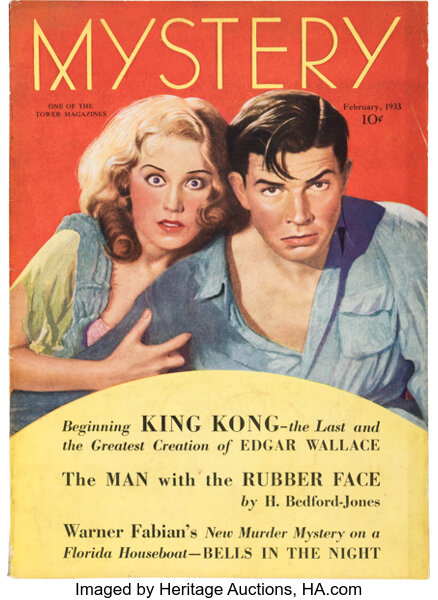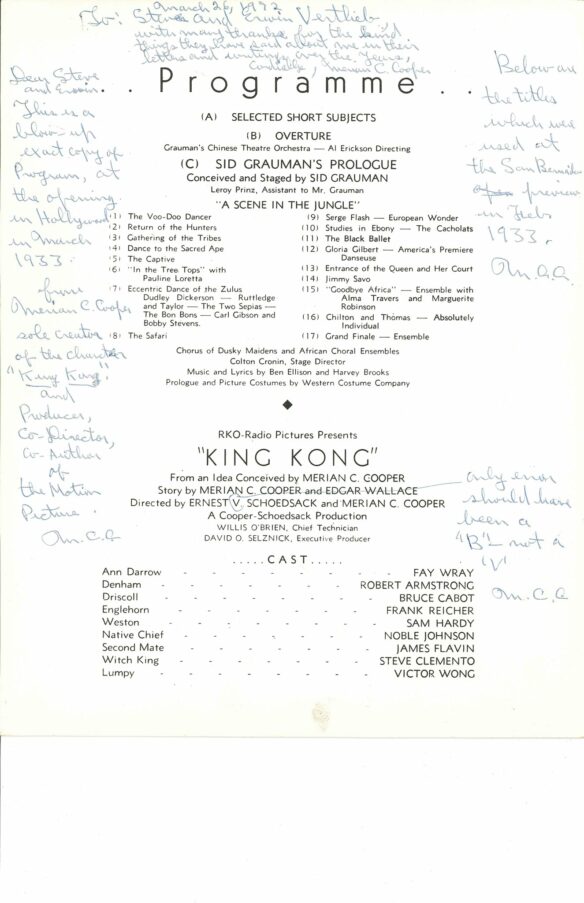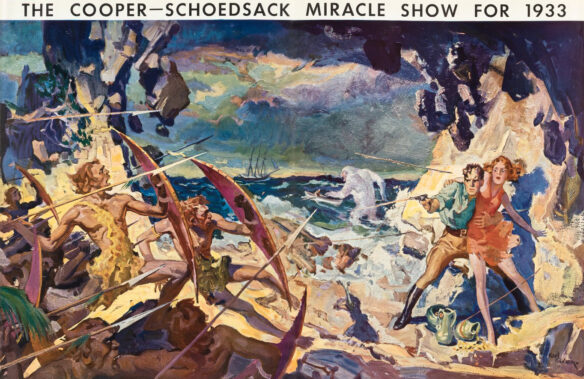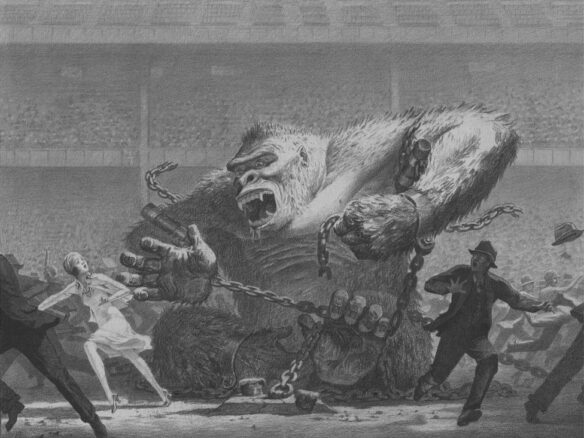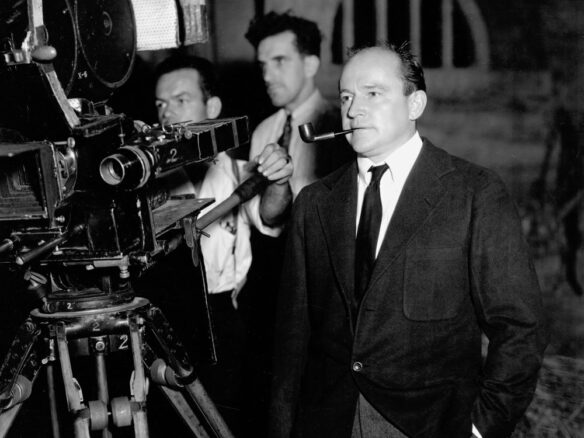
By Steve Vertlieb: On April 21, 1973, a hero by the name of Merian C. Cooper laid down the gauntlet of fame and passed quietly into memory. He’d grown ill from the rigors of age and experience, losing his grasp of earthly endeavors after a brief hospitalization. Like so many who had passed before him, his name and contributions would become a line or a paragraph in recorded history, meaning no more than most men do or have done…and yet, this proper Southern gentleman would not have passed quietly, nor would his legend be blinded by death…for his was a singular journey, and his memory would continue to inspire excitement and imagination among those searching for adventure and significance along life’s often empty corridor. He was a king and a god in the world he knew and, like the giant ape that he created, Merian C. Cooper lived in both the civilized and primordial jungles of mortal endeavor.

I first became acquainted with the Cooper name somewhere around 1956 when I was a mere lad of ten. My mother had told me stories for years about a movie she had seen as a young woman concerning a fantastic tale of beauty and a fabled beast, a huge mythological, predatory ape alive in a lost, primordial jungle who follows the scent of a young American woman back to the “civilized” shores of New York City. There, amidst the spiraling skyscrapers of a volatile human jungle, the beast falls to his death from atop the newly constructed, tallest steel mountain in the world, the Empire State Building. Yet, the shattered titan laying crushed upon the streets of the young city would not be stilled. Like the martyred prophet finding rest at last on a Roman cross two thousand years earlier, the fallen Kong would rise again in resurrection and mythology far beyond his mortal years. Its legend would hover uneasily within the vague cracks and crevasses of my mind for most of my life and consciousness.
I was haunted by nightmares about Kong for many years. In my dreams I fancied that this huge, primordial ape had come for me and was marauding the night streets of the city in search of human prey. I could hear the distant pounding of his colossal footsteps in the darkness. I could see the cataclysmic shadow of his gargantuan features peering angrily through my window, roaring in immortal defiance of my sheltered sleep. I’d struggle to open my eyes and regain consciousness, for I knew that if I succumbed to the reality of slumber’s horrifying phantoms that I’d be lost. Locked in deep repose, my eye lids fluttered open and I sat up in bed, sweating profusely and gasping for breath. I had managed to escape the demons of my own youthful imagination once more. Yet, I knew that somewhere beneath my own consciousness he was waiting and that I dared not return to sleep.
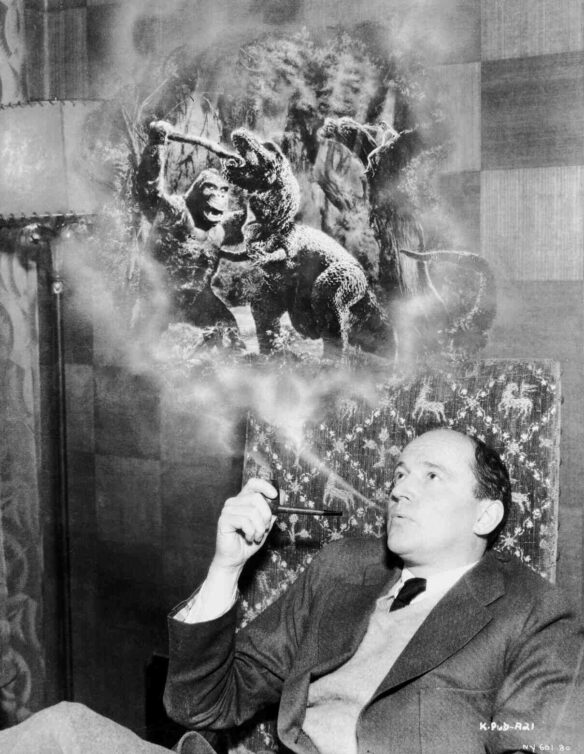
When my local CBS television affiliate in Philadelphia announced in the mid-Fifties that they were going to air the local premiere of Cooper’s masterpiece King Kong, I was thrilled. After years of dreams and fanciful imaginings, I was at last going to see the actual film. My mother’s tales of this magical motion picture had conjured countless nights of mythical, nocturnal wanderings in which the horrific beast would trample surrounding buildings, coming ever nearer to where I lay asleep in my room. I’d first sense, and then actually hear the prehistoric pounding of his premeditated footsteps approaching as I slept, paralyzed with fear. As the visage of this terrible beast peering through my bedroom window, huge eyes gaping in bewildered rage, awakened me in a cold sweat, the utter immensity of this astonishing stranger in a strange land invoked an uncontrollable eruption of frightened screams in the night.
I’d waited anxiously for the day in which “Kong” would finally reveal himself on my tiny television screen. In my arrogance and expectation, I’d forgotten that I was still but a small boy, subject to the stringent rules and regulations of the house in which I lived. I’d assumed that seeing the film was a right, rather than a privilege and so, in my self-righteous determination to watch the film on my parents’ television set, I callously disregarded the sometimes thin line separating entitlement from boorishness. I was therefore punished, and forbidden from watching the premiere telecast of “Kong” at home. I still had time, however, before the movie would begin. I ran to a neighbor’s house and asked if I might watch “Kong” there. My friend’s mother was moderately compassionate, allowing me to sit in front of their television set to watch the film. My heart was beating wildly as the strange beeping atop the RKO tower filled both the tiny screen and my ears. The overture commenced, and I was transported to a far away land into which the mortal walls of civilization and confinement evaporated, as though time itself had melted into primordial remembrance.
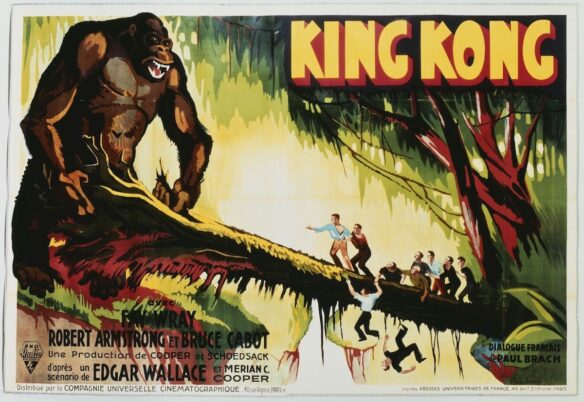
The film began as Carl Denham searched New York for a frail, vulnerable woman to accompany his motion picture crew to Skull Island. Fog lit seas concealed the enormity of the cavernous island, while ominous drumming sounds pierced the mist. Expectation gave way to wide eyed wonderment as Ann Darrow was carried away from her safe confines aboard “The Venture” by ferocious natives, tied to a sacrificial altar in the black jungle, illuminated by the fires of burning torches, breathlessly awaiting an unimaginable fate. Huge trees came crashing to their roots as the jungle erupted with violence. Something was coming for her. As Ann looked higher, still higher toward the jungle skyline, her eyes beheld the greatest sight she’d ever beheld. There, gaping down at her from the far horizon, was an enormous beast, a ferocious predator, with lust in its eyes. Ann’s screams echoed my own as they pierced the terrible night skies.
It was at that moment that my friend’s mother entered the room, announcing sweetly that their dinner time had arrived, and that the time constraints of my kind invitation had expired. In utter disbelief and frustration, I ran from the house screaming yet again. In desperation I tried frantically to think of someone…anyone…who might permit me to continue watching the film. I remembered my sainted Aunt Jesse who lived perhaps six blocks away. I ran until I thought my heart might burst. When I reached my aunt’s house I began pounding on her door. Thinking something was wrong, she opened the door with a worried look, wondering what on Earth must have happened. I quickly explained that my own mother has punished me, forbidding me from savoring the most deliciously awaited moment of my entire life. Graciously, my Aunt took pity on this pathetic, tortured little boy, and turned on Channel Ten. There, before my tender young eyes, the drama played itself out…the capture of Kong by civilized “soldiers,” his unseen voyage back to America, the poetic crucifixion on a New York stage, and the fabled finale in which the crippled denizen of a lost, primordial jungle is ravaged by airplane bullets, his torn limbs and carcass crashing violently to the streets of Manhattan.
Frustrated, yet determined, I had gotten my first taste of the legendary motion picture. It was not to be my last. Mere days later, I went to the traditional Saturday Matinee for children at the local Benner Theater on Castor Avenue in Philadelphia. The short subjects, cartoons, and serials had ended and now, before the unspooling of the scheduled feature of the week, the trailers began for subsequent features. “Coming Next Week” announced the on screen banner. As light filled the darkened theater screen, a giant primordial gate began to open slowly, painfully, against the crushing weight of terrified natives trying vainly to hold it back. There, between rotting splinters within wooden gates of this ancient, collapsing structure, was KONG, the mythic, nocturnal face of my terrified dreams and imaginings. I gasped in excitation. God in his kindness had taken pity on me. I was to be given a second chance to see King Kong as it was meant to be seen…on the giant theatrical screen that, alone, could mirror its image and stature. I had never beheld anything so amazing. I sat quietly in the noise filled theater as other children of my age ran up and down the aisles. I was enraptured with awe and with wonder. It was an experience that would eternally haunt me, forever changing the course of my life.
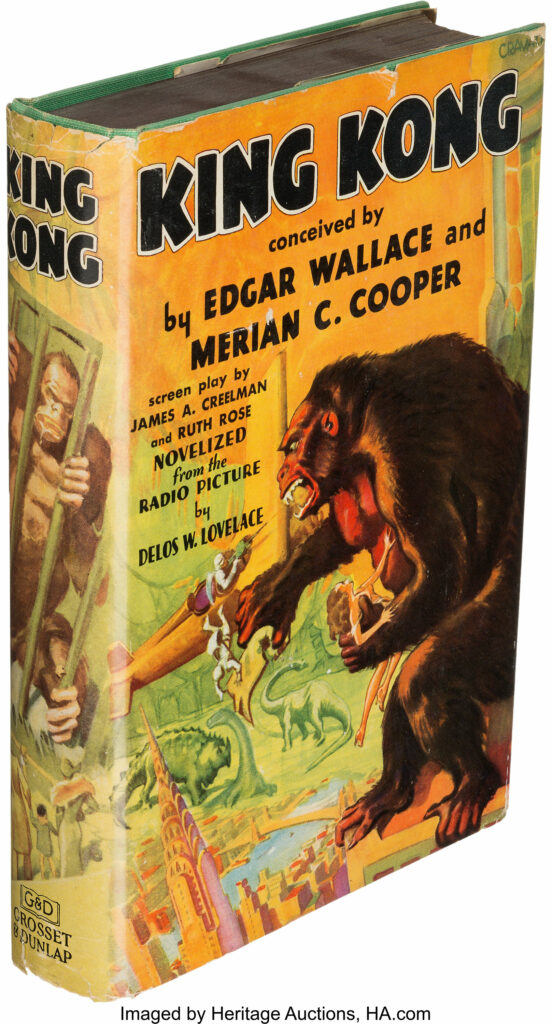
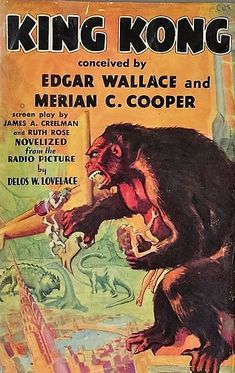
In October 1965, Bantam Books published the novelization of the fabulous tale. First printed in 1932 by Grosset and Dunlap, with authorship ascribed to Merian C. Cooper and Delos W. Lovelace, this slim new edition was heralded in banner lettering that excitedly proclaimed…”NEVER BEFORE IN PAPERBACK! THE ALL-TIME KING OF THE MONSTERS…KING KONG.” My sweat soaked fingers reached out longingly for the book, pulling it from the drug store rack, and holding it tenderly in my hands. I rushed home and read it from cover to cover. The inside teaser promised the greatest adventure of all time: “…King Kong, the giant killer ape whose savage heart was touched by the innocent beauty of a strange blonde girl…Who battled to save her from the ravenous jaws of man-eating dinosaurs…Who finally broke loose into the modern world and terrorized a whole city in search of his lost love. The one and only KING KONG.” The back cover was equally lurid, and unashamedly enticing: “Taller than a five-story building, capable of crushing airplanes with his bare hands, ruler of a lost empire of prehistoric monsters. The Bride Of Kong…blonde waif from the city streets who invaded Kong’s kingdom, with a group of motion picture adventurers, and became the prisoner of the beast’s strange passion. KING KONG…The world-famous story of beauty and the beast which has thrilled and amazed millions all over the world.”
Intoxicated by the thrill of owning a fragment of the fabled film, I decided to reach out to the publisher in an attempt to actually locate and contact the man who had created, written, and filmed this amazing motion picture. I sent a letter to Merian C. Cooper in care of Bantam Books in New York, hoping that they might forward my letter to him. I remember composing a rapturous letter of praise for both the film, and its makers in which I spoke lovingly of how deeply the film had impacted not only my dreams, but my life. I co-signed my little brother’s name to the letter in the hope that if it elicited a response, that he might be included in that recognition. To my utter astonishment, a letter arrived with a postmark dated November 27, 1965, from a post office box in Santa Monica, California. The return address read simply…Merian C. Cooper, Brigadier General, USAF, Ret. The typewritten letter was signed by Merian C. Cooper, and began…”Dear Stephen and Erwin Vertlieb…Thank you for your fine letter of November 11. It is a great pleasure for a man like me to receive such a fine letter from much younger people. Of course I have received many, many thousands of fan letters in my life, but yours is one of the finest. I feel entirely unworthy of such words of praise and therefore am honored that you should so write me.” Thus began an enduring, surprisingly intimate friendship between teacher and student that would last for the next eight years until his passing in 1973.
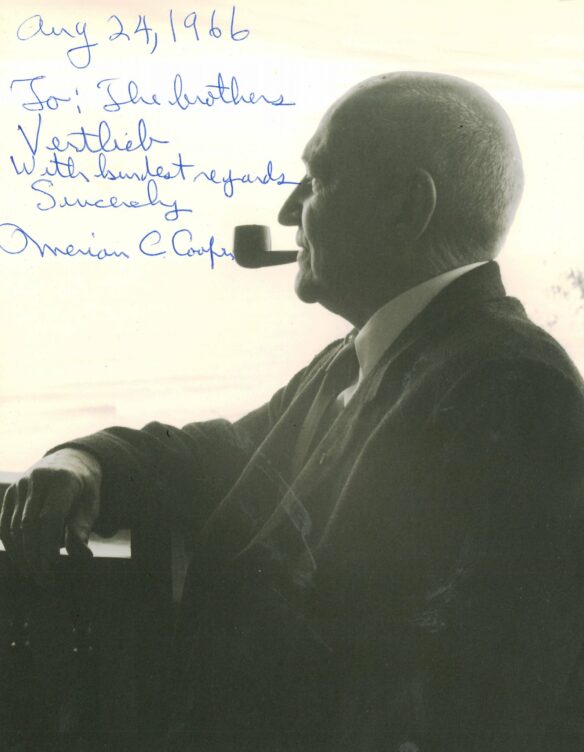
Cooper was a faithful and tireless correspondent. No sooner would I mail off a letter to him than another one would arrive by return mail. Except for his first letter which was handsomely typewritten, all of his subsequent correspondence over the next eight years would be handwritten in what would quickly become his instantly recognizable style and signature. In the years that followed, our correspondence grew in singular intensity. There were weeks in which five of the seven days of the calendar would bring letters or packages from this remarkable soul, and historical giant. General Cooper and I would grow very close over the next eight years and, although we were never destined to meet, our daily and weekly correspondence would grow in both frequency and deepening involvement. He was a war hero, an aviation pioneer, a Brigadier General in The United States Air Force, a motion picture studio head, a famed documentary film maker, producer, director, writer and New York Times journalist. Perhaps it was advancing age and changing times that led him to become so enamored of the adulation of a then nineteen-year-old film student but, whatever the underlying reasons, we became close friends through correspondence over the remaining eight years of his life.

I received one particularly fascinating letter from “Coop” while he was visiting Vienna, Austria in the Spring of 1969. In a letter dated April 26, 1969, he wrote “Have only been back in Vienna a short time. We spent the Winter about 30 miles up the Danube from here. On a Famous hilltop care-restaurant on the edge of the Vienna Woods, my wife (Dorothy Jordan) and I are writing a few brief notes.” He went on to answer a few historically related questions about the pre-production and shooting of King Kong. He wrote “The great wall and gate in ‘King Kong’ was thus built: I was wandering one day on the 40 acre ‘back lot’ of RKO Pathe in Culver City, and saw the skeleton of a huge gate that Cecil B. DeMille had built in the mid 20’s for his silent version of ‘The King of Kings.’ I had it quickly remodeled with great doors etc. for Kong – Built the village in front of it, etc. and shot it there. Instead of Roman structures, I remodeled the King Kong structure out of it. It worked well. Glad you liked ‘The Selznick Years’ and the battle scenes from ‘Four Feathers,’ and the sequence from ‘King Kong’. David – a friend of mine – had nothing to do with either, except to back me up on ‘Kong’ when no one else believed in it. He had already left RKO and gone to MGM, and I had become production head of RKO in his place when Schoedsack and I directed the Empire State sequence of ‘King Kong.’ Nevertheless, unless Dave Selznick believed in me, ‘Kong’ could not have been made. He never saw the battle scenes in ‘Four Feathers’ until the picture was finished. Part of it Schoedsack and I produced and directed in Africa, and part about 20 miles from Palm Springs. But Selznick had great talent and was my friend.”
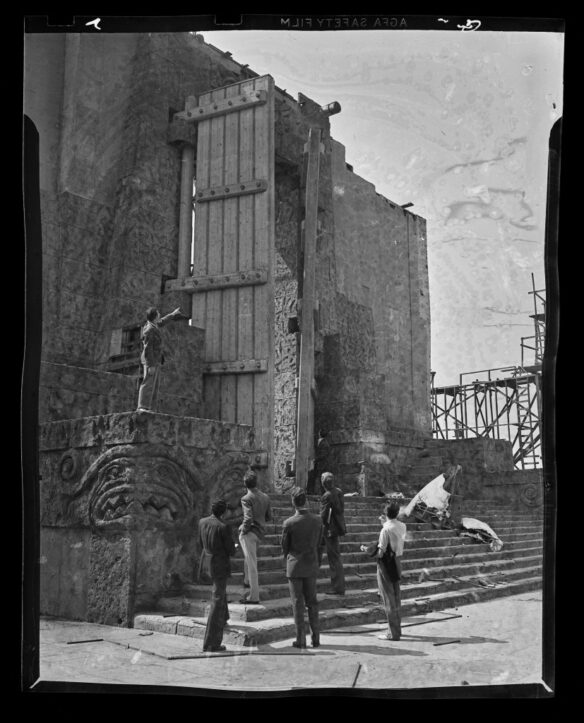
Meanwhile, back in Philadelphia, I was drafted into the U.S. Marine Corps in February, 1966, and spent some nine weeks on Paris Island, South Carolina. While never a promising physical specimen by any stretch of the imagination, I tried to pass the grueling physical regimen of life in the Marines. After a couple of months of frustrating efforts to succeed, I was eventually advised by a kindly drill inspector that, while he sincerely believed that I was trying to make it, that not everyone was physically cut out to be a Marine, and that he was going to recommend my discharge. He reassured me that I would likely be re-assigned to the Army upon my discharge. During that remarkable journey as a “Marine,” I received a letter from Coop. In a note dated March 11, 1966, he wrote… “Dear Stephen Vertlieb: Your brother has just written me you are a private in the Marines at Parris Island. This is just a line to wish you all the luck in the world and to say that I know you will make a great Marine. With every best wish, and God keep you…Cordially yours, Merian C. Cooper.” I suspected that my drill instructors were more than in awe, and a little shocked to hand this young private a letter from a Brigadier General in The United States Air Force.
Our correspondence was lively and fascinating. I was yearning to learn more about this fabulous individual, and the film he had created which had so pervasively invaded my dreams and fertile imagination. One of the more controversial aspects of Cooper’s masterpiece was the fabled spider crab sequence which no one had apparently ever seen. In the ensuing moments following the great gorilla’s encounter with the white invaders upon the giant log bridging the ravine, the terrified remnants of Carl Denham’s crew are hurled to their deaths in the cavernous pit below. In surviving prints of the legendary sequence, the men crash to the primordial ground beneath Kong’s jungle. Cooper originally filmed an extended sequence in which the hapless victims are then devoured and torn to shreds by carnivorous prehistoric spiders while their terrified screams fill the night. Forrest J Ackerman reported in early issues of Famous Monsters of Filmland magazine that there were rumored, unedited prints circulating in the Philippine Islands, and that various fans had claimed to have seen these rare sequences in theatrical prints of the film over the years. I asked Cooper point blank if this was at all possible, and he vehemently denied their existence. He wrote that the inclusion of this sequence in any known prints of the picture was patently impossible, as he had personally cut the scene out of the negative before the final version had even been scored by composer Max Steiner. The film would not have been released to the public in a rough cut version, and so these fables, while undeniably intoxicating, could never have occurred. Many years later, when Warner Bros. Pictures was preparing their definitive box set release of the restored epic on DVD, I was asked by the studio to provide evidence of the deletion for their lengthy documentary on the production of the picture. I photocopied Merian Cooper’s original letter to me and circled the paragraph in which he denied any possibility of the sequence surviving his cut. I then forwarded the statement and mailed the letter to the studio. That portion of his letter to me, along with the incriminating circle in my own hand, appears in the completed documentary. Hence, my name was included in the special “Thank You” credits concluding the impressive new feature film, documenting the production of “Kong.”
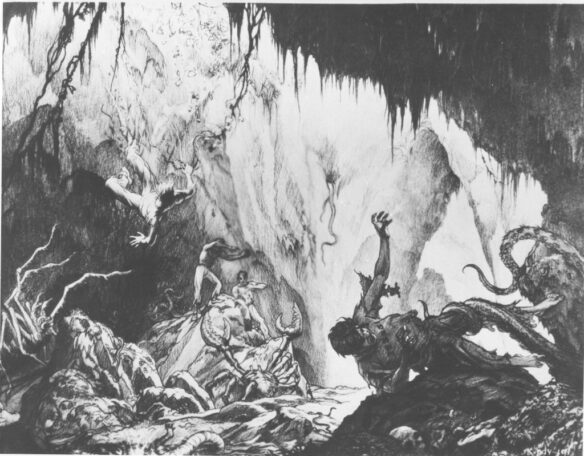
When King Kong was originally released in early 1933, it included what would later become notorious sequences in which natives were literally torn apart by Kong, ground into the mud by his giant foot, and eaten alive on the mean streets of New York City. However, the most provocative and notorious of these sequences involved an unconscious Fay Wray awakening in the ape’s huge paw as Kong tears fragments of her clothing away from her quivering body, and brings her undergarments to his nose, sniffing her scent in mounting curiosity. Forrest J Ackerman dubbed this interlude the “rape” scene from King Kong. Filmed one year before the Hays Office imposed its infamous decades of censorship upon Hollywood films, the violence and implied sexuality in these scenes, deleted in 1938 upon the film’s first official re-release, had grown in both legend and intensity. When the missing scenes were discovered by a Pennsylvania collector named Wes Shank in the early seventies, they were sold to Janus Films, and restored to all subsequent versions of the picture. In my eagerness to query Cooper about these scenes, and his psychological intent in filming them, I described the most provocative of these as the “rape” scene. His response was immediate and indignant. In no way, he insisted, was that sequence ever designed to suggest assault or rape. It simply reflected the innocent curiosity of a primordial denizen of the jungle who had never before encountered or sniffed the female scent. Kong became increasingly enamored of Ann Darrow and protective of her well-being, he insisted. Such violence would never have occurred to him. I had forgotten in my delirium that Cooper was an old-world Southern gentleman whose gallantry would never have permitted so violently sexual a thought. He was deeply offended by the suggestion of sexual motivation on the part of the ape, and it took some profoundly apologetic words of innocence and explanation on my own part in order to earn back his eventual forgiveness and understanding of my impetuosity.
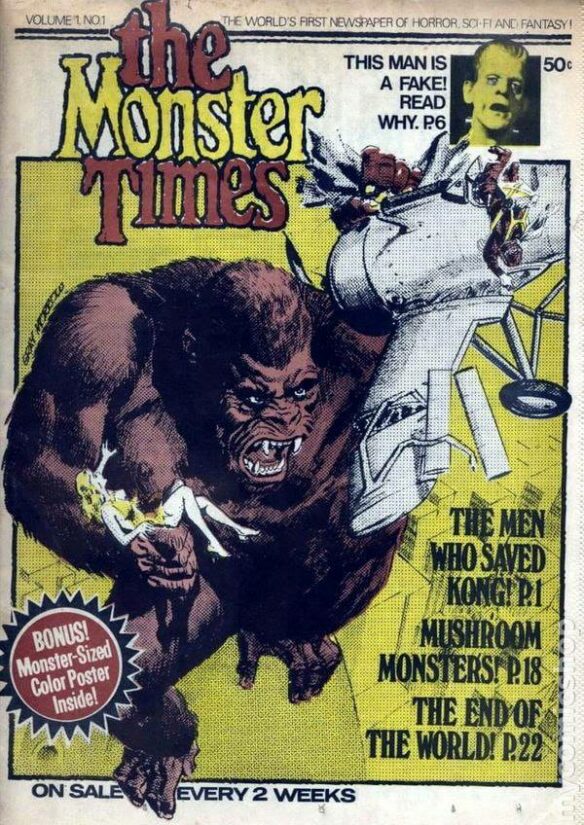
Another such misunderstanding occurred toward the end of our relationship when I wrote a series of articles for the then fledgling New York cinema tabloid, The Monster Times in 1972. While I always both respected and cherished the cinematic milestone that Cooper had created in the infancy of sound back in 1933, and was in awe of the film’s wondrous stop motion photography created by Willis O’Brien, I always encountered difficulty with a particularly brief sequence toward the end of the film. Early stop motion possessed a lovely archaic jerkiness which only served to further endear its primitive photography and personality to successive audiences. The ultimate crudity of early animation truly became a signature component of the character of these marvelous creations. That was why I took notice of the singular moment in the film when Kong climbs up the Empire State Building in a long shot taken from a distance away. The gorilla movement seems much too smooth in his climb, and the scene contains none of the signature jerkiness shown in all other shots of Kong. There even seems to be the suggestion of a sagging suit, however briefly, that would apparently betray a process filmed in another fashion entirely for the remaining moments of the sequence. In discussions with several fans, historians, and even a local special effects technician, I became convinced that there might have been an actor donning a gorilla costume, if only for several seconds of film, during that fateful climb. I published that opinion in my series of articles for The Monster Times. Cooper was understandably protective of his creation, and grew offended once more by my unfortunate insinuation. He swore repeatedly that only Willis O’Brien’s revolutionary visual effects were represented in the finished film, and that no human actor had ever donned a gorilla suit. Once again, I apologized profusely to Cooper, explaining that I was simply attempting to analyze and explain a somewhat controversial sequence in an otherwise flawless cinematic masterpiece. In a letter from Coop dated March 20, 1972, he wrote a note of clarification. “That scene of King Kong climbing The Empire State Building was a very simple ‘special effect’ shot. Anyone reasonably acquainted with ‘special effect’ works can tell you how it was done. Why don’t you ask Ray Harryhausen? I’m almost sure Willis O’Brien and I told him when I hired him for his first real animation job of consequence – ‘Mighty Joe Young.’ Consequently, I did ask Ray Harryhausen how he felt the controversial sequence might have been filmed, and sent me a detailed sketch by return mail explaining, in his own hand, how he felt the scene might have been photographed.
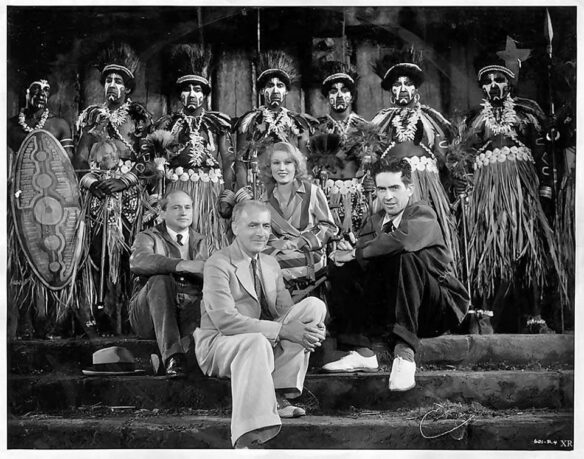
Additionally, when a subsequent installment of my series was altered, and its language dumbed down by the publisher to more easily appeal to young fans reading the issue, Cooper had difficulty understanding why I didn’t have more creative control over my own work. When he was a reporter for the New York Times, he explained, the editor respected his “copy,” and never exerted unwelcome creative control over its contents. I politely explained to Cooper that The Monster Times was not in the same league as the New York Times, and that I was not Merian C Cooper.
On March 30, 1972, I was surprised to find that Merian Cooper had sent me an urgent telegram. It read “Forgive my hasty, ill tempered letters. You wrote about me most splendidly in your articles, for which I thank you. Seems to me petty detail if original New York showings was 100 minutes or not. Whole point is when cuts were made. When I go to Los Angeles will make check as, of course, I have full access to official records there of ‘King Kong’. Best regards to Erwin and you – Merian C. Cooper.”
At about the time that my series of articles appeared in The Monster Times, I received a telephone call from two college professors who had read my work on “Kong,” and wanted to talk to me about incorporating my series into a new book that they were editing for Avon publishers in New York. Harry Geduld and Ron Gottesman, professors of film at Indiana University and Princeton University respectively, drove to my home in Philadelphia and took me out to lunch to pitch the assignment. I adapted my work from the original series of tabloid articles, and the completed essay became the lead chapter in The Girl In The Hairy Paw published in 1976 by Avon Books. The handsome edition, edited by Ron and Harry, became the very first volume ever devoted entirely to King Kong.

In a letter from Cooper dated March 27, 1972, he attempted to explain conflicting “cuts” of King Kong for separate preview audiences. He wrote that “The preview in San Bernadino in February, 1933, and the Hollywood premiere at Grauman’s Chinese March 24, 1933, had in the motion picture itself the long titles which I have sent under separate cover to you and Erwin. I cut these titles drastically for the March 2nd New York opening. Max Steiner scored separate opening title music for the long title opening and the short title opening. I planned it that way and personally edited both versions.” He went on to discuss the subsequently edited release versions of the film thusly. “The reasons for the cuts were voluntary by RKO, but not approved by me. If the original press book says 100 minutes – then the press book, as press books so often are, was wrong. The original New York opening was a little over 104 minutes. I have copies of my directions to the New York, and to the Hollywood openings – which I have looked up – giving exact running times each place. I think you write exceedingly well, Steve. How can I expect you to know all of the immense detail of my picture ‘King Kong’? I was wrong to let myself be disturbed over trivialities. I treasure the letters from you and Erwin – so no hard feelings from me.”
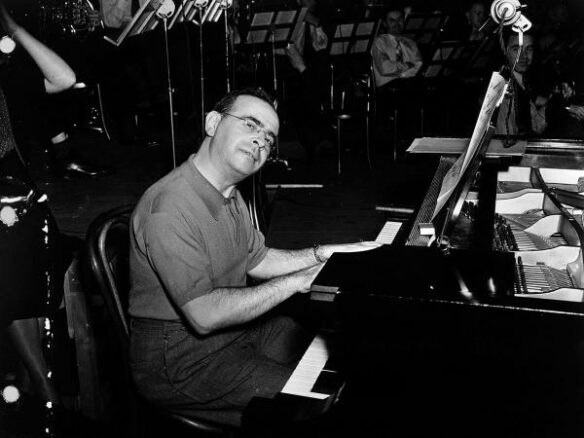
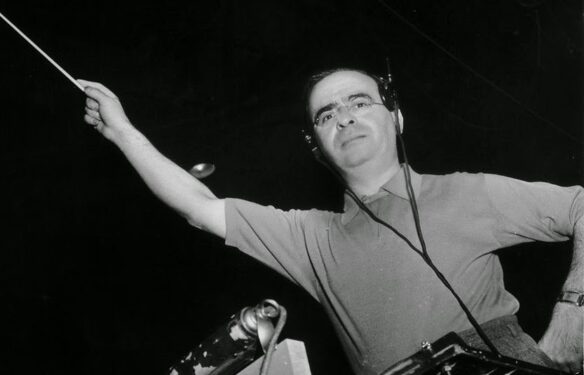

I received an additional letter from “Coop” written a day earlier in which he related some anecdotes about Fay Wray’s legendary screams in the finished picture. “She was down to see my wife and me last week, and we joked and laughed about the full day I had her work in the recording room – screaming!!! Of course, I am sure you realize I had her do a number of variants for ‘King Kong.’ But when those screams were used in other pictures – often quite inartistically – I, for sure, didn’t like it. I had her scream up and down all the way along the scales – and I think I used them correctly. I liked them; Obie liked them; “Maxie” Steiner liked them – Monty Schoedsack didn’t. But I was the Boss – so I used them as planned by me from the outset. You no doubt got the cost of ‘King Kong’ from me…about $650,000.00. I have the detailed budget now before me. The total direct charges were $513,242.02, but I picked up a big portion of that ‘overhead’ which Dave Selznick had left behind him and charged $163,337.18 to ‘King Kong’ (though its actual overhead was only roughly $40,000.00.) Those were busy days. Simultaneous with ‘King Kong,’ I produced the first Astaire-Rogers picture, ‘Flying Down to Rio’; ‘Little Women’ with Katherine Hepburn; was her first Academy Award picture with ‘Morning Glory’ (part of which I directed myself) and a lot of others too. And, I might add, took RKO – in my administration – from an $18,000,000 loss to a $5,000,000 profit – all in the midst of The Great Depression. Indeed, if I tell the unvarnished truth, I am the only man in all of RKO’s history who ever made the company profitable. All this is confidential to you as I am using it in my own book.” (Sadly, his own accounts of these transactions were never finalized or published.)
A week or so earlier in a letter dated March 22, 1972, Coop addressed the somewhat “sticky” issue of authorship of King Kong, so often ascribed to novelist Edgar Wallace. He wrote “Just found my copy of Edgar Wallace’s ‘My Hollywood Diary.’ He arrived in Hollywood December 2, 1931, and the last day of his diary is on Sunday 7th February, 1932. He died a day or two later, as I recall it. On Wednesday, 6th January, 1932 he wrote in his diary on Page 170 as follows: ‘The next month or two are very important for me. If this film gets over that Cooper is doing it’s going to make a big difference to me, for although I am not responsible for the success of the picture, and really can’t be, since the ideas were mainly Cooper’s, I shall get all the credit for authorship and invention which rightly belongs to him.’ This is the fact, not a publicity man’s dream!!! Always question advertising and publicity!!! Check your sources, so Winston Churchill once wrote. How right he was.” In his letter of April 7, 1972, Coop admitted that “Kong” was not his favorite picture. “I’ve always considered ‘Chang’ my best picture,” he wrote, “though ‘Grass’ – my very first picture – is historically the best known of all my 4 pictures as either writer, director, or producer. On ‘Grass,’ and ‘Chang’ I was all three – also some other pictures.”
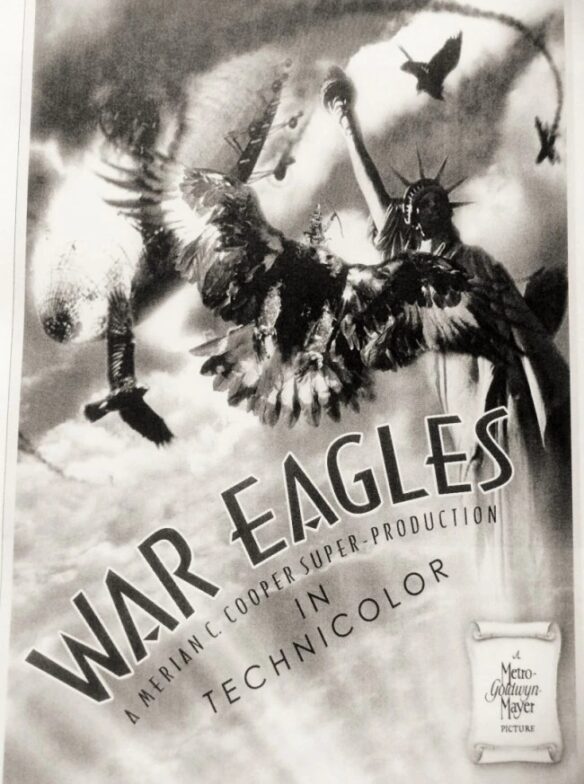
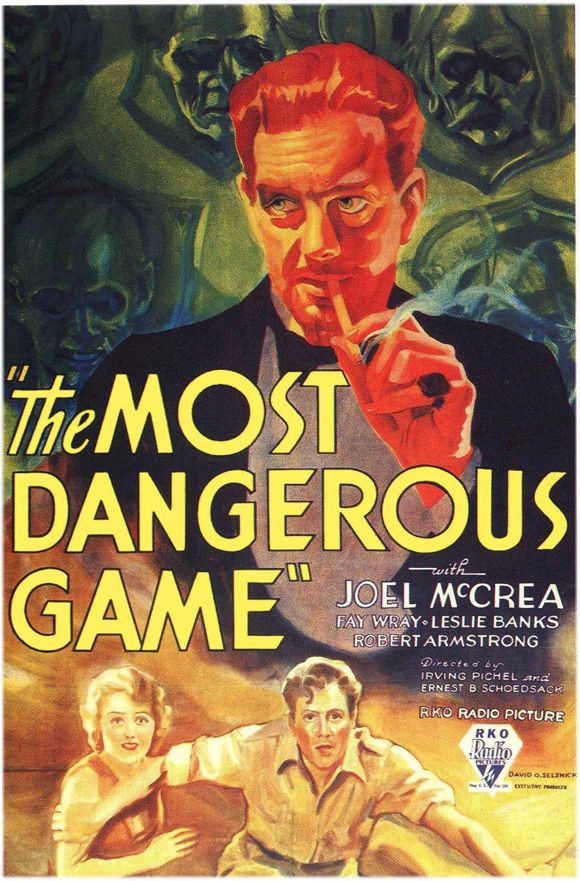
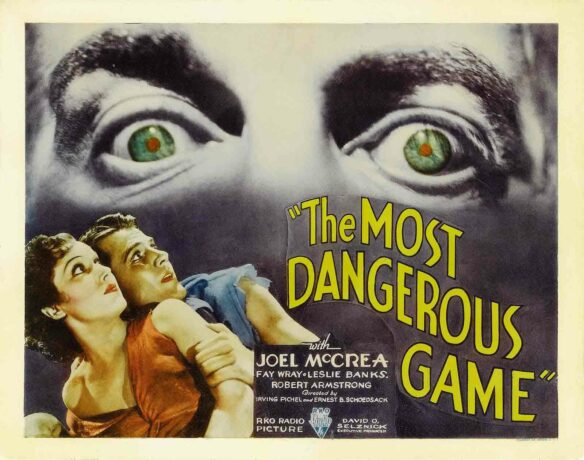
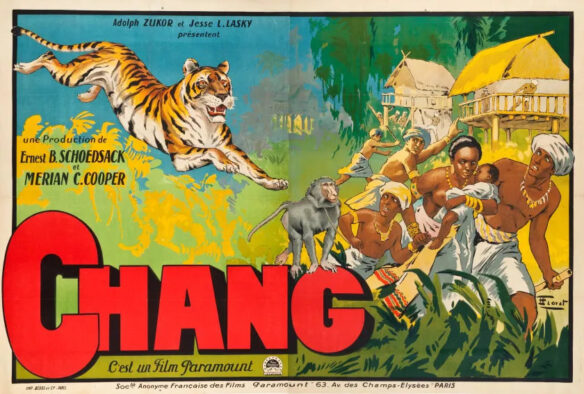
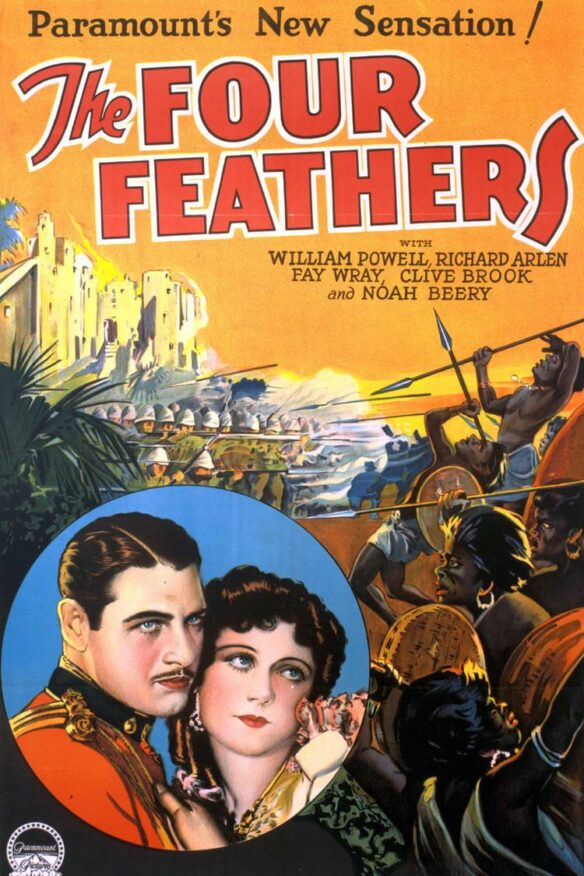

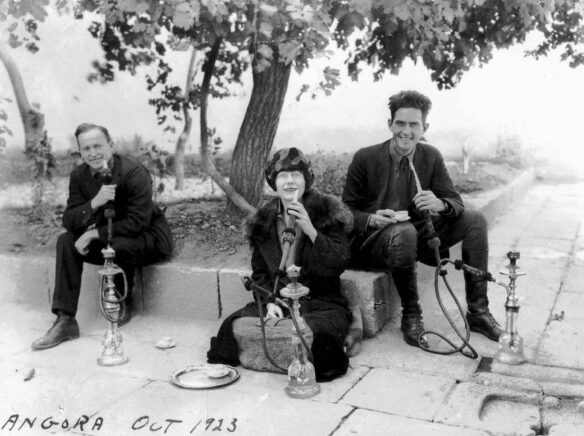
On January 18,1972 Coop wrote me of his relationship with composer Max Steiner. He writes “Did you know that I flew up to Los Angeles for Max Steiner’s funeral to give the final eulogy at Mrs. Steiner’s request? Did you know that ‘Maxie’ always gave me credit for first getting him to write ‘dramatic screen music’? Of course, I didn’t write a note of it, but the concept was mine. Until ‘The Most Dangerous Game’ where my ideas were tried out a little, until I worked out with Maxie a full idea for his great dramatic screen score for ‘King Kong,’ nobody – but nobody – had conceived the idea. At least Maxie said so. He sent me magnificently framed original 1st sheets of 5 of the great scores he did for me in remembrance of our work together to ‘free the screen’ from the old fashioned techniques of the stage. I treasure it. It hangs on the wall of my den. He was a true creative genius, and one of my oldest and best friends. I admired and loved him. God rest his great soul.”
Cooper had always promised that if I ever ventured West, that he would be happy to introduce me to Fay Wray who he had enticed into starring for him in King Kong by promising that her co-star would be “the tallest, darkest leading man in Hollywood.” I accepted his gracious invitation and hoped that upon some future trip to Los Angeles I might meet my beloved correspondent, as well.
I hadn’t heard from Cooper in several weeks, and began to wonder if he’d grown ill. To my utter disbelief and sadness, I learned that he had been admitted to the hospital and that he was gravely ill. I felt that I had somehow hurt him by believing that even a single frame of “Kong” had been filmed with a man in a gorilla suit, rather than by stop motion animation. Indeed, a Chicago newspaper had run an absurd story about some elderly gentleman claiming to have “played King Kong” in the original movie, relating his wholly fabricated story of how it felt to stand perched atop the model of The Empire State Building battling toy airplanes. I wrote an angry letter to the reporter who had filed the story, accusing his subject of being either a lunatic or a baldfaced liar. The reporter wrote me back an indignant letter, insulted by my insinuations, standing by his “sources,” and never printing a retraction.
Deeply concerned for Cooper’s health, I wrote an apology along with a get well card and sent it to him in the hospital. I soon learned that what I most feared had finally happened. This wonderful pioneering soul and visionary film maker had passed away. I was heart broken, and worried that he had slipped away without ever having seen my note of apology. I spoke with his widow, actress Dorothy Jordan, afterward and learned from her that he had indeed received my card prior to his passing, and that he had smiled when he read it. In a case of poetic irony that could only have occurred in Hollywood, both Cooper and his on screen persona, Carl Denham, passed away within hours of one another. Actor Robert Armstrong, who will forever be identified as “the man who captured the monster,” died on April 20, 1973, while his real life counterpart passed away on April 21, 1973. Both Carl Denham and Merian C. Cooper returned home together, walking hand in hand, immersed in primordial mist beyond the legendary wall, on Skull Island.
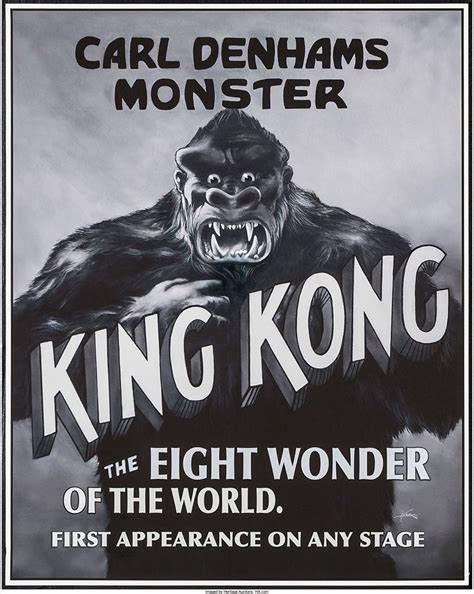
When I finally made the trip to Los Angeles for the first time during the Summer of 1974 I had an opportunity to visit Fay Wray. I had secured her home address from Ron Gottesman and wrote her in advance of my trip. I told her who I was, and that I had known Merian C. Cooper somewhat intimately through eight years of intense and passionate correspondence, and that he had advised me that if I ever came West that he would introduce us. She wrote back a series of letters, and kindly asked me to telephone her when I arrived in town. I picked up the phone and telephoned her as soon as I got into town. She was, of course, retired and living in Century City, the wife of a prominent physician. I recognized her voice as soon as she answered the phone. I was actually speaking with Ann Darrow, the Girl In The Hairy Paw. She invited my brother Erwin and I to come over to her high rise, and spend the afternoon with her. We arrived at the appointed time, and waited patiently for her in the lobby. The desk attendant said that we were expected, but that she had stepped out and hadn’t returned as yet. At last I saw her come through the door. She took my breath away. Even at age seventy, she was still a vision of loveliness, a wonderful remnant of classic, original Hollywood. She apologized for her late arrival, stating that he she had just come from the funeral of one of her dearest friends. I felt badly for her, and suggested that we might try and come back another time. With amazing grace and dignity, I felt, she waved her hand into the air and said “No, life must go on.”
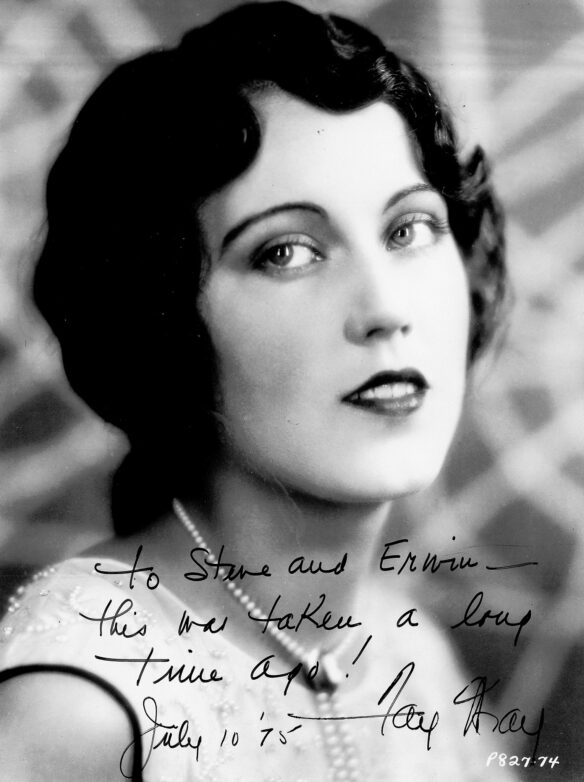
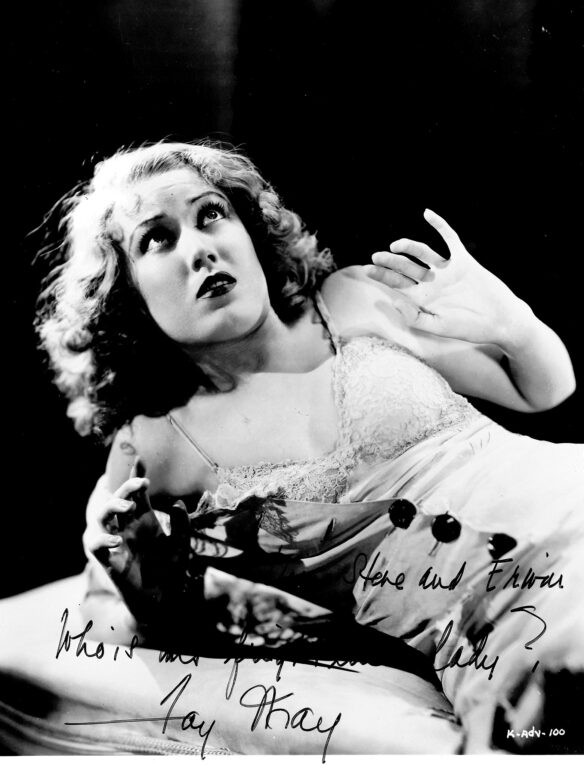
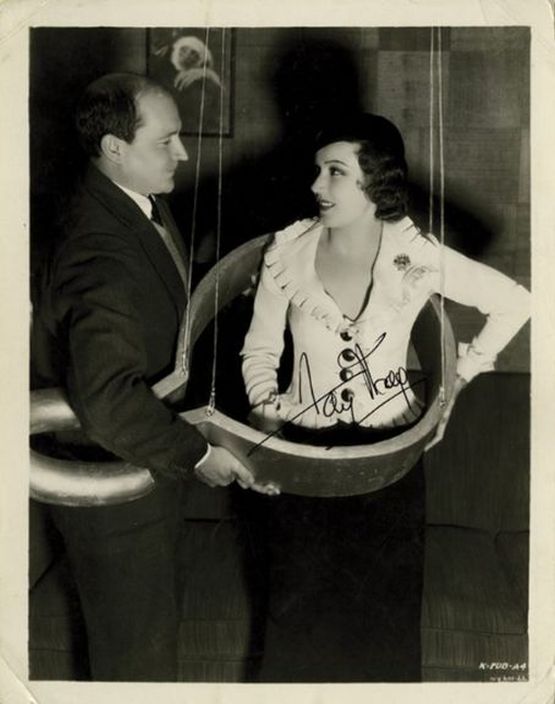
We spent two hours or more with Fay in her apartment talking about old Hollywood, and the making of both King Kong, and The Most Dangerous Game, its sister production. She spoke lovingly of her friendships with Merian C. Cooper, Ernest B. Schodesack, and Robert Armstrong whose character of Carl Denham, she remembered, was based solidly upon Cooper himself. She said that she had remained in touch with each of them over the years and regarded them as close friends. When I asked her about her relationship with co-star Bruce Cabot, however, she grew silent and then said that she’d prefer not to talk about him. Cabot had won a reputation over his years in the film community as both a womanizer and something of a scoundrel. Apparently, these stories were silently verified by her reluctance to discuss him. She asked if I would mind going into her kitchen and pouring some cokes for each of us. I found the Coca Cola cans stocked in her refrigerator but, as I opened the first soft drink, it exploded in my hands and spilled over her sink counter. I felt terribly about the accident, but she laughed graciously and excused my “accident.” She guarded her privacy at this point in her life, and wanted her fans and admirers to remember her as she was on the silver screen. Consequently, she politely turned down my request for photographs, but was kind enough to autograph many of the still photographs that I’d brought along with me for her to sign. We remained in touch for a time, but after she moved to New York I lost track of her. Her daughter, Victoria Riskin, went on to play her mother’s creation, Ann Darrow, in the briefly televised Volkswagen commercial in which a fully animated King Kong climbs to the top of The Empire State Building, then descends and makes his escape in a gigantic Volkswagen car. The very clever ad campaign was soon scrapped, as the executives at Volkswagen thought that the image of a gargantuan automobile betrayed their brand identification as a dependable small car.

Thanks to the generous intercession and kindness of “Coop,” I was able to begin a friendship through correspondence with Ray Harryhausen in February of 1966. The supreme animation genius had been a lifelong hero, and I was thrilled to commence a relationship that lasted from that day until his passing on May 7, 2013. However, because of his frenetic filmmaking schedule in Europe and in Spain, as well as his living now in England, our friendship had grown only through correspondence, as it had with “Coop.” In 1981, as Ray was preparing to tour the United States while promoting what would be his last film, Clash Of The Titans, I learned that he would be making a personal appearance at Temple University in my hometown of Philadelphia. Needless to say, I was more than mildly excited by the prospect of finally meeting this brilliant motion picture technician whose career, along with Cooper’s, had so profoundly impacted my life. I drove to the University campus and walked into the lobby surrounding the auditorium where he would be making his presentation. Predictably, there were numerous fans and admirers gathered there in anticipation of meeting the great Ray Harryhausen. Not wanting to become lost in the proverbial shuffle and crowd, however, I resolved to locate the “green room” where guests of the University might be sequestered while awaiting their appearance. Happily, I found a door leading to a dressing area where a guest might be hidden away from his audience. Unhappily for me, the door was being guarded quite anxiously by an armed Temple University police guard who was obviously not in the mood for any funny business. As I approached the door I noticed that the officer was becoming increasingly agitated. He was perspiring profusely and, as I approached his appointed post, he instinctively placed his right hand upon his holstered weapon. I calmly explained that I wished to speak to Ray Harryhausen before the program began. He defiantly explained to me that I could just as easily wait with the other fans in the lobby adjoining the auditorium until Ray finally emerged.
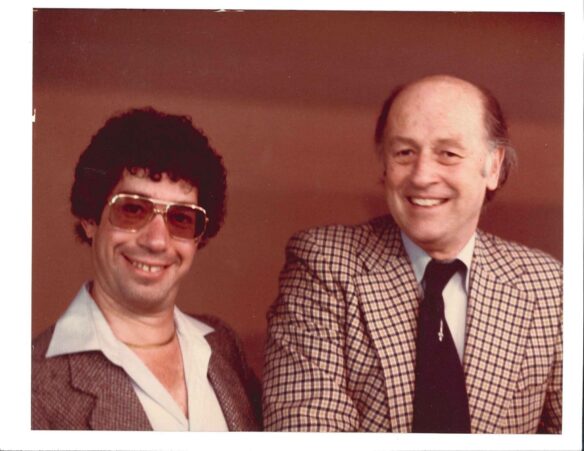
After several somewhat tense moments in which I attempted to explain to Wyatt Earp that I was, indeed, a “friend” of Ray’s, and not merely a fan trying to connive my way into the room, the guard cautiously opened the door, allowing me to enter. I tried to reason with him, explaining that if, indeed, I was lying and that Ray wouldn’t know who I was, that the guard had my explicit permission to kick my rump out into the crowded street. As I entered the large room, I spied Ray and his lovely wife, Diana, seated at a small table having coffee. Approaching them, I could quite literally feel the breath of my armed companion blowing hotly onto the back of my neck. As I walked closer to the table, Ray arose from his chair. I extended my hand in friendship and said “Ray, we have corresponded for many years.” He asked “What’s your name?” I answered “I’m Steve Vertlieb,” to which Ray’s mouth opened in amazement as he exclaimed quite loudly…”STEVE VERTLIEB?” Turning to Diana, he yelled quite loudly “DIANA…IT’S STEVE VERTLIEB.” As this was transpiring, and as I was myself drowning in a self-manufactured sea of nervous perspiration, I felt the proximity between the guard and I grow ever wider. Ray clasped my hands warmly, and invited me to sit with them. This was to be only the first of many shared interludes with Ray Harryhausen over countless ensuing years, which included a special program in Baltimore at the Fanex Film Expo in 1990 in which I both hosted and shared the stage with Ray for a programmed event called “An Afternoon With Ray Harryhausen.”

A year or so earlier, somewhere around 1980, I was able to make a trip to the home that Merian C. Cooper had shared with his wife Dorothy for many years until his death. The house was located in Coronado, California, and Erwin and I had been been invited by Dorothy to come and visit. She met us at the door, along with her son Colonel Richard Cooper. I was taken aback rather quickly as I noticed the striking resemblance between Dorothy and Fay Wray. Apparently, Cooper may have subconsciously cast his own wife in the key role of Ann Darrow in his film masterpiece. Their shared likeness was startling. Dorothy was very sweet and kind and showed us many of her husband’s mementos and artifacts. I held his original bound script for King Kong in my hands with his hand written notations. I was terribly excited and, frankly, stunned to turn around and see the famous caricature of Cooper directing “Kong” hanging quite prominently on the wall behind me. The drawing showed Cooper with megaphone in hand shouting “Make It Bigger…Make It Bigger,” and was a Christmas present given him by his cast and crew during December 1932. I found it difficult to hide my excitation over standing next to this fabled piece of art. Dorothy reminded us that she had appeared as an actress in films of the 1930s under the name of Dorothy Jordan, and that that she had actually come out of retirement, and returned to the screen as the woman whose family is massacred by “Scar” in her husband’s production of The Searchers, directed by John Ford in 1956.
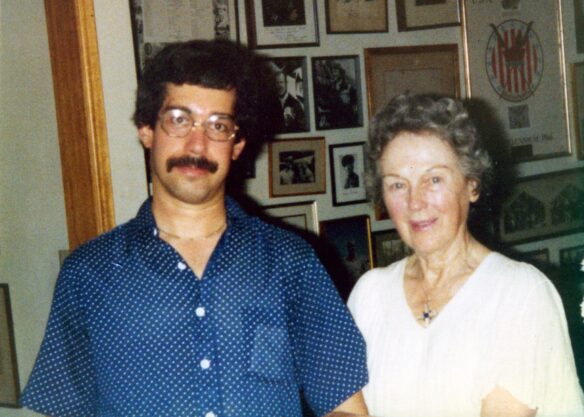
As we were preparing to leave Dorothy and Richard, after several hours of sheer magical conversation and memories, I grew emotional and said with tears filling my eyes that “I wish He was here.” Dorothy smiled, growing somewhat emotional herself, and replied simply…“He is. He is.” Dorothy would live another eight years. When I learned that that she had passed away in December, 1988, I telephoned the Cooper house and expressed my sadness to one of her daughters. When I explained who I was, Dorothy’s child became choked up and said “Oh, I remember you. Your letters meant to very much to my father.” That single farewell remembrance by the succeeding generation of Coopers brought a tear to my eyes, and a sense of final resolution to my heart. It had been a long, adventurous voyage upon often rough seas and alternately choppy waters with “Coop” aboard his beloved ‘Venture,” the embattled freighter that carried Carl Denham, Ann Darrow, and Jack Driscoll to Skull Island to meet their fate…and with them, my own.
My association with Cooper and his larger-than-life creation has continued from my own childhood until now. In 1981, I was asked by legendary Philadelphia television children’s host Gene London to appear with him at The Philadelphia Art Museum for a one-hour lecture and presentation chronicling the making and production of King Kong before a live audience. Later, during the Winter months of 1993, I was invited to appear with Kong author and historian George Turner (The Making Of Kong Kong) on stage as a guest speaker at the venerable Gateway Theater in Chicago for the sixtieth anniversary celebration of the motion picture. George and I talked about the making of the film, and answered questions from an audience of some five hundred fans, prior to a 35mm screening of the historic motion picture, while Turner Entertainment sent over an “actor” in a gorilla suit to stroll about the theater lobby as King Kong. I couldn’t help wondering what “Coop” might have thought of the irony of that spectacle.
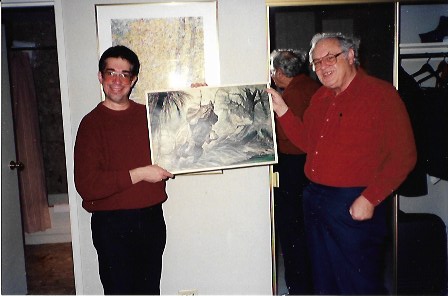
Merian C. Cooper remains a fascinating, legendary figure in the evolution and history of motion pictures. He was pioneer, and a founding influence in the development of the art of film. That this fabulous individual took such an interest in me and became my intimate correspondent and friend for the final years of his life is a source of perpetual astonishment on my part. He was larger than life and, in many ways, more colorful and gigantic than even the prehistoric ape that he created and so cherished. Eighty years have passed since Cooper’s King Kong first startled and thrilled theater goers around the world. As Carl Denham so triumphantly exclaimed to an audience of mere mortals, from the stage of the theater in which the immortal KONG was displayed to “gratify your curiosity,” the mythical creature was “A King And A God In The World He Knew.” Much the same could be said of his creator.
++ Steve Vertlieb, March 2024
